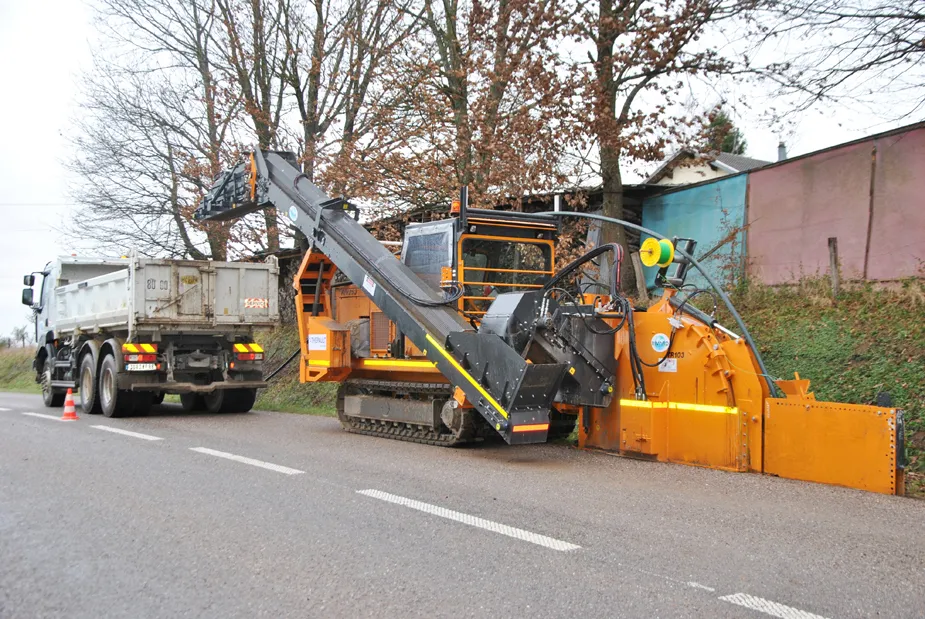A methane-powered bus has set a speed record for a regular city bus of nearly 124km/h at a test track in the UK, according to media reports.
The bus, from the southern city of Reading, was converted to run on compressed methane from cow manure and was painted black and white like a Friesian cow.
Mechanics removed the bus’s engine governor that restricted the vehicle’s speed to 90km/h. The bus then broke the record on the banked high-speed circuit at Millbrook Proving Ground, near the city of Bedford.
May 22, 2015
Read time: 2 mins
A methane-powered bus has set a speed record for a regular city bus of nearly 124km/h at a test track in the UK, according to media reports.
The bus, from the southern city of Reading, was converted to run on compressed methane from cow manure and was painted black and white like a Friesian cow.
Mechanics removed the bus’s engine governor that restricted the vehicle’s speed to 90km/h. The bus then broke the record on the banked high-speed circuit at Millbrook Proving Ground, near the city of Bedford. %$Linker:2 External <?xml version="1.0" encoding="utf-16"?><dictionary /> 0 0 0 oLinkExternal Click here Visit "poo powered bus breaks land speed record" page false http://metro.co.uk/2015/05/20/poo-powered-bus-breaks-land-speed-record-5207435 false false %> to see a video.
The cow waste was broken down by anaerobic digestion to produce biogas, which was then liquefied and stored in several fuel tanks within the expanded roof of the bus.
The bus’s speed would not be a Guinness World Record because it failed to exceed 241km/h. But the vehicle did make an appealing sound, apparently. Chief engineer John Bickerton said it was an “impressive sight” as it swept by on the track. “It sounded like a Vulcan bomber - the aerodynamics aren't designed for going [124km/h]," he said.
A statement from Millbrook said the code name for the bus is Bus Hound, which pays homage to a British-based group called the Bloodhound Project which is hoping to reach a land speed record of around 1,610km/h next year – more than 33% above the current record.
The Bloodhound Project is designed to inspire the next generation of science, technology, engineering and mathematics experts. The Bloodhound vehicle is 13.4m long with two front wheels within the body and two rear wheels mounted externally within wheel fairings. It weighs 7.5tonnes and the engines produce more than 100,670kwN.
The vehicle will be tested at Hakskeen Pan, a dry lake bed about 200km north of the town of Upington in South Africa’s Northern Cape region. To see the Bloodhound project, %$Linker:2 External <?xml version="1.0" encoding="utf-16"?><dictionary /> 0 0 0 oLinkExternal click here Visit bloodhound ssc project page false http://www.bloodhoundssc.com/project false false %>.
The bus, from the southern city of Reading, was converted to run on compressed methane from cow manure and was painted black and white like a Friesian cow.
Mechanics removed the bus’s engine governor that restricted the vehicle’s speed to 90km/h. The bus then broke the record on the banked high-speed circuit at Millbrook Proving Ground, near the city of Bedford. %$Linker:
The cow waste was broken down by anaerobic digestion to produce biogas, which was then liquefied and stored in several fuel tanks within the expanded roof of the bus.
The bus’s speed would not be a Guinness World Record because it failed to exceed 241km/h. But the vehicle did make an appealing sound, apparently. Chief engineer John Bickerton said it was an “impressive sight” as it swept by on the track. “It sounded like a Vulcan bomber - the aerodynamics aren't designed for going [124km/h]," he said.
A statement from Millbrook said the code name for the bus is Bus Hound, which pays homage to a British-based group called the Bloodhound Project which is hoping to reach a land speed record of around 1,610km/h next year – more than 33% above the current record.
The Bloodhound Project is designed to inspire the next generation of science, technology, engineering and mathematics experts. The Bloodhound vehicle is 13.4m long with two front wheels within the body and two rear wheels mounted externally within wheel fairings. It weighs 7.5tonnes and the engines produce more than 100,670kwN.
The vehicle will be tested at Hakskeen Pan, a dry lake bed about 200km north of the town of Upington in South Africa’s Northern Cape region. To see the Bloodhound project, %$Linker:






